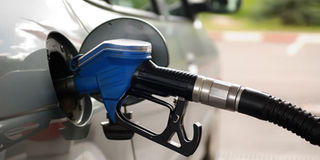Causes of high fuel consumption

Causes of high fuel consumption
What you need to know:
Besides spark plugs and air cleaner, the engine sensors if aged can affect tuning and fuel economy. Driving style is also a key fuel economy influencer.
Aggressive driving (take offs and acceleration), sudden braking to interrupt momentum and poor journey planning will contribute to poor fuel economy. Bad or worn out tyres will affect traction and make your engine work harder to get you going, this reduces your fuel economy.
Overloading your car will require the engine to frequently run at high engine revs to manage the load, this reduces fuel economy.
I understand your concern about the poor fuel economy statistics of your Subaru. It is true the model 2000 Subaru Forester with a 2.0 litre petrol engine should deliver a fuel result of approximately 10 litre per km when driving in city traffic.
Driving on the highway, your Subaru’s fuel economy ought to improve to about 12 KM/ Litre. Quite interestingly in the recently concluded Shell Fuel Save challenge from Kampala to Jinja and back, one of the participants Gaetano Kaggwa who drove a Subaru Forester with a bigger 2.5 litre petrol engine posted a fuel economy result of 11.5 KM/ Litre.
Another participant M/s Bridget Kamahooro driving a 2.0 litre perol Toyota RAV4 posted a fuel economy result of 14.3 KM/ Litre, while Mark Luyima’s 2.0 litre petrol Toyota Ipsum posted 10.6 KM/ Litre. The winner of that challenge Ms Rose Amodoi of Monitor Publication driving 1.0 litre petrol Toyota Vitz posted a fuel economy result of 25.1 KM/ Litre. These vehicles were all fuelled with the same fuel Shell Fuel Save. However, the different fuel statistics proved that good additivated differentiated fuel and service with good lubricants will improve your fuel economy. However, there are other conscious smart choices and decisions that a driver must make to achieve the full potential economy and performance of their car or break the barrier (record) like Ms Amodoi did.
Key determinants of good fuel economy include use of good quality fuel with cleaning additives and differentiated with efficiency improving engine piston friction modification technology. You have ticked this box by using Shell Fuel Save unleaded. Engine service with good quality engine oil fortified with efficiency improver additives and genuine parts play a key role in fuel efficiency enhancement as your engine runs lighter with less energy loss and you seem to have ticked that box too.
Fuel economy tips
However, there are other factors which will influence fuel economy as you drive your Subaru. The tuning condition of the vehicle. After carrying out the regular lubrication and filter service it is important to confirm that your Subaru engine has no faulty or aged oxygen sensor, mass air flow sensor or throttle potentiometer.
Besides spark plugs and air cleaner, the engine sensors if aged can affect tuning and fuel economy. Driving style is also a key fuel economy influencer. Aggressive driving (take offs and acceleration), sudden braking to interrupt momentum and poor journey planning will contribute to poor fuel economy. Bad or worn out tyres will affect traction and make your engine work harder to get you going, this reduces your fuel economy. Overloading your car will require the engine to frequently run at high engine revs to manage the load, this reduces fuel economy. You may need to consider if you have ticked all the boxes above that affect the fuel economy of your Subaru before you give up on it.
Problem
Hi Paul, you recently wrote that a Subaru Forester should consume about one litre for 10kms. I have a 4wd Subaru forester, (model 2000, 1974 CCs). One litre of fuel only takes me six kms. I strictly use Shell Fuel save. I have changed the fuel filter, air cleaner and spark plugs. I also recently serviced the car using shell oils. These were poured in the car engine in my presence. I also use Shell coolant and not water. However, there’s no change in the fuel consumption. Despite all this, my car consumes a lot of fuel. What could be the problem?
Juma B
Hi Paul, the headlamp light indicator on the dashboard of my car comes on after about 10 seconds and doesn’t go off until the engine is switched off. I have failed to find the fault. What could be the problem?
Samuel.
Hello Samuel, the persistent display of the head lamp indicator on the dash board even when you have not switched them on means there is a fault with the headlamp system. You need a smart car electrician to establish whether there is a broken down or damaged electric circuit. An inspection of the headlamp circuit should consider the wire harness and connecting sockets. In case the circuit is fine then, investigate the working condition of the headlamp switch.
Why your engine fan becomes loud
The engine blower fan is controlled by an automated system actuated by a control module which is linked to the main engine control module. This engine blower fan performance is regulated by changing engine temperature and coolant flow conditions. There are engine temperature and coolant pressure sensors which keep updating the engine control module (ECM) with changing conditions. The ECM will determine the blower fan speeds according to the changing values communicated by the coolant temperature and pressure sensors. The performance of the blower fan is therefore affected by the operation of the thermostat and engine coolant water pump. In the event that one or both of these components fail the engine computer will activate emergency running. This is designed to keep the engine extra cooled under the assumption that engine coolant is not flowing as it should. You must get a qualified BMW technician to run a computer diagnosis which should confirm my hunch that the thermostat or coolant pump or both have failed.




